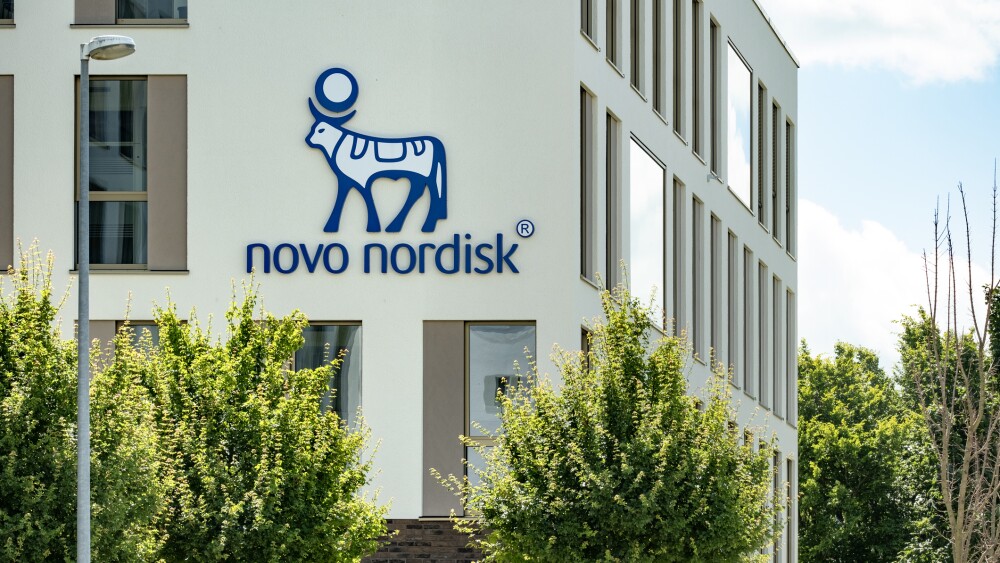No patients have received Casgevy, CRISPR Therapeutics and Vertex Pharmeceuticals’ recently approved sickle cell gene therapy. Experts weigh in on the path to profit for the treatment and the therapeutic class in general.
Update (Sept. 17): Vertex confirmed to BioSpace that patients have started to receive infusions of Casgevy.
Complex gene therapies are starting to hit the market but all have faced the same reality: a tepid reception from the healthcare system and a cloudy path to profitability.
It can take about a year for a patient to go through the preparations needed to receive a gene therapy treatment, Jen Klarer, managing partner at The Dedham Group, told BioSpace. “I expected there to be a slow time from approval to treating the first patient.”
CRISPR Therapeutics and Vertex Pharmaceuticals are a great example. The companies made history last year when they achieved the first approval of a CRISPR-Cas9 gene editing therapy for sickle cell disease in December 2023. But when the companies reported 2024 second quarter earnings a few months later, the sobering—albeit expected—reality set in: no patients had been treated.
The fuller picture of Casgevy’s path to profitability is even more complicated. During Vertex’s second quarter earnings call, the company explained that 20 patients are “in the funnel” to receive Casgevy. That means that the patients have signed up and gone through the cell collection process. This can take three or four attempts to get enough healthy cells to be turned into the therapy, explained Myles Minter, a research analyst with William Blair, in an interview.
The cells are then sent back to a manufacturer for processing: the cells’ DNA is edited to encourage the body express fetal hemoglobin. The cells are then transfused back into the patient.
CRISPR and Vertex have been mum on the timeline for actually treating patients. Minter said that investors have been frustrated by the lack of information on when some money might start flowing back to the companies.
“They give us the patients that have been committed enough to give cells, but the time until end product infusion back into that patient, which is when revenue is recognized, that’s a bit murky,” Minter said. “That could be as quick as one month. It could be as long as six to nine months.”
Reimbursement Complications
One of the biggest question that remains regarding Casgevy’s path to profitability is: Will it be covered by insurance? Casgevy has a list price of $2.2 million. But it’s a one-time therapy with curative intent, meaning a lifetime of healthcare costs typically associated with sickle cell disease could be avoided. The problem is, the healthcare system was not set up to think about disease resolution, and instead has historically been focused on symptom management, Klarer said.
Klarer said that patients with commercial payers, which typically issue coverage decisions within three to six months of approval, are likely to be the first comers for therapies like Casgevy. It might take over a month to work through the prior authorization process, but they should be able to get access. Patients covered by Medicaid and Medicare, on the other hand, will likely be next in line to access gene therapies, Klarer added. These public payers are slower to adopt new groundbreaking treatments, taking as much as a year to come out with coverage decisions.
“If you were to break the population into different books of business by coverage, you will see commercial first,” Klarer explained. “[Then] we’re going to start to see an uptake in managed Medicaid, and then fee for service Medicaid will just inherently have to happen later, but that also aligns with all other product classes, to be honest.”
Other gene therapies similarly have sky-high price tags that can be a bit of a shock. Orchard Therapeutics’ Lenmeldy, which was approved in March for metachromatic leukodystrophy, has a wholesale acquisition cost of $4.25 million, making it the most expensive drug in the world. Although in the first six months of this year the therapy brought in $9.8 million in revenue for Kyowa Kirin, which acquired Orchard Therapeutics in October 2023 for $477.6 million, this was all from Europe, where the treatment has been approved as Libmeldy since December 2020. Like Casgevy, Lenmeldy has not yet yielded sales in the U.S.
This year, the Centers for Medicare and Medicaid put out the Cell and Gene Therapy (CGT) Access Model, which aims to increase access to these potentially transformative treatments. The program, which is initially focused on sickle cell disease, ties payments to outcomes in an effort to make it easier for states to pay for the expensive treatments. Hospitals may want to wait and see how this program pans out before offering cell and gene therapy services to certain Medicaid patients.
Fertility Treatment and Timing It Right
One thing that is definitely not covered by Medicare and Medicaid are fertility treatments patients may want to undergo in parallel with receiving Casgevy or other gene therapies that might hamper their ability to have children. Minter said this has become a battleground for these reimbursement discussions.
Both Vertex and competitor bluebird bio, whose Lyfgenia gene therapy was approved at the same time as Casgevy for sickle cell disease, have been vocal about the challenges to getting coverage for fertility preservation, Minter said.
Bluebird attempted to get its fertility support program covered for commercial insurance patients who receive the company’s therapies, but was rebuffed by the Department of Health and Human Services in July.
That same month, Vertex filed a class action lawsuit against HHS’ Officer of Inspector General. While a fertility preservation program can be offered to commercial insurance patients, Vertex explained in the suit that the same cannot be done for federally insured patients “because of the threat of criminal, civil, and administrative penalties arising from OIG’s erroneous legal positions.”
With the issue unresolved, Klarer said that patients may need to seek secondary insurance or find a foundation to cover the out-of-pocket costs for fertility treatments. That can all take time, delaying treatment.
The Future of the Gene Therapy Market
Smaller companies such as CRISPR, bluebird, Orchard and others are breaking barriers bringing complex gene therapies to the market, while Big Pharma’s like Eli Lilly and Pfizer also have gene therapies in the pipeline. Larger companies have existing relationships with field teams, hospitals, payers, distributors, specialty pharmacies or other links in the chain established to deliver a marketed product, said Klarer. But she added that biotechs certainly can get it done.
“I’ve been very impressed by the biotechs that are looking to take this on themselves,” Klarer told BioSpace. “It’s an enormous undertaking of a company that does not have a marketed asset at this time and doesn’t have the incoming revenue of having a marketed asset.”
CRISPR has the benefit of working with Vertex, which has a well-established cystic fibrosis franchise and experience launching innovative products. But that also means the biotech will have to share its profits with the bigger company. The companies are splitting revenue 60/40.
Minter is still confident that Casgevy can eventually make $3 billion or more in annualized run rate. William Blair has clocked peak sales at $3.6 billion. Those numbers are nice for a biotech, but for a company like Vertex, Minter thinks the mid-size pharma is more focused on its cystic fibrosis assets and upcoming pain therapies, the latter of which will be tapping into an $8 billion market with no profit sharing.
“Casgevy is more important as a successful first-ever approved CRISPR gene editing drug launch,” Minter said. “It’s more important from that aspect than it is for Vertex as top line [profit and loss].”
Commercialization is of course important and companies are likely aware of the gene therapy market’s challenges behind the scenes, Klarer said. But those in the early stages of developing gene therapies tend to be laser-focused on gathering meaningful clinical data, while simultaneously working to smooth manufacturing processes that would allow the resulting product to be produced at scale.
“In terms of where you need to be spending your time and resources, you won’t get to the point of commercialization if you don’t do those early things correctly, first,” she said.
Editor’s Note (Sept. 12): This story was updated to clarify that Jen Klarer’s comments address the general ex-vivo gene therapy space and not Casgevy specifically. The story was also updated to clarify the 60/40 revenue split between Vertex and CRISPR as well as the manufacturing process.






